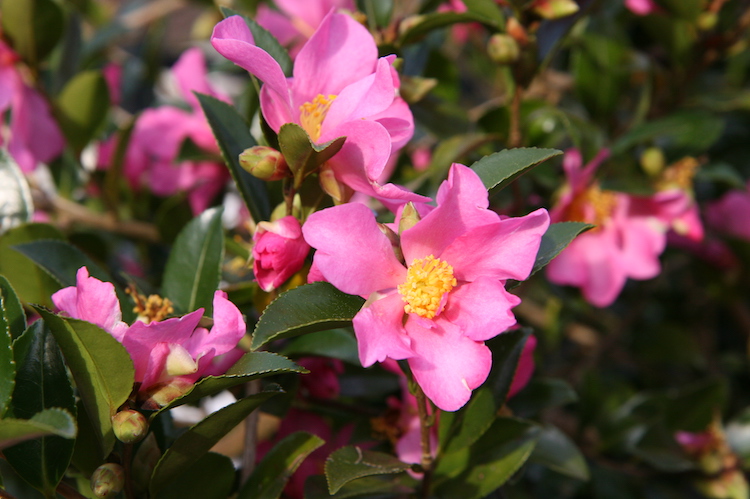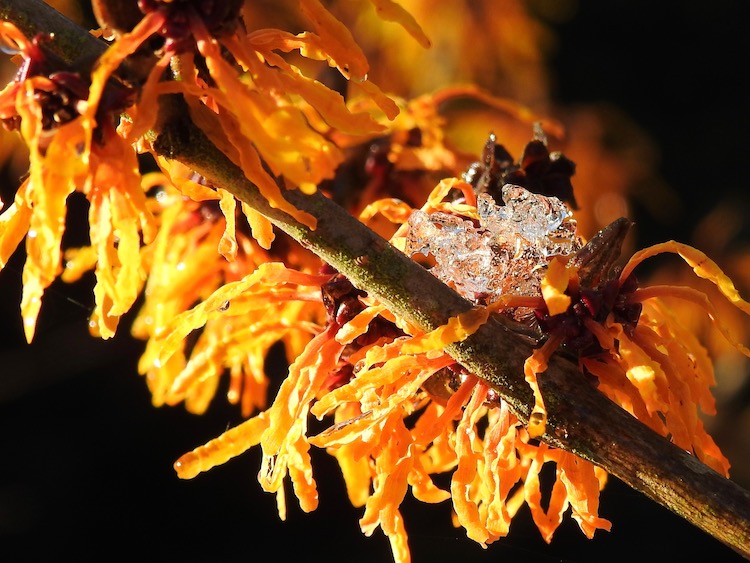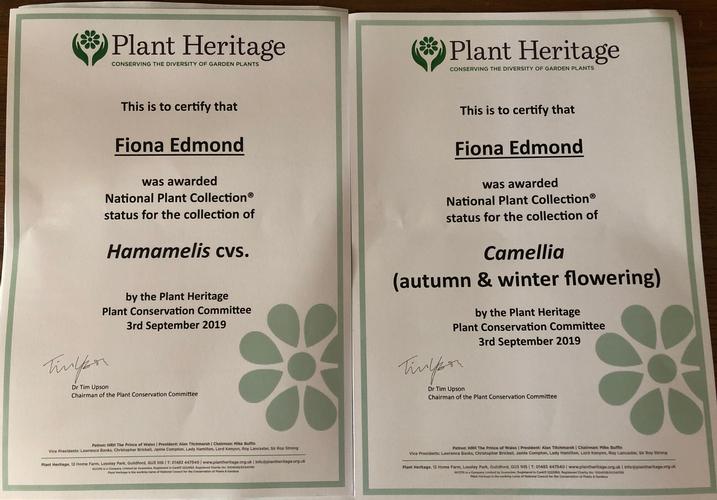Last Friday morning an eagerly awaited large brown envelope dropped through the letterbox, containing 2 certificates confirming that I had been awarded National Collection Holder status for my collections of Hamamelis cvs and Camellias (autumn & winter flowering). This was the culmination of a process that started way back at the beginning of this year when we opened the gardens in January for the first time. Prior to this we used to open for the new season in February for the snowdrops, by which time many of my favourite winter flowering scented shrubs, along with my growing collection of Hamamelis were often past their best. It seemed to me a shame not to share these with our regular visitors and others often keen to get out after Christmas and New Year. The response we had was unbelievable. Time after time I heard people exclaiming that they never knew it was possible to have so much colour in the garden, and that they were unaware of many of the beautiful scented winter flowering shrubs which experienced gardeners rely on at this time of year. What many shrubs lack in colour in the winter they more than make up for with scent. Having had a quick count up of the different varieties of Hamamelis I had amassed at 38, I started wondering how many would be required for it to be called a National Collection, and what might be involved in gaining this recognition?
After a few minutes on Google I had discovered that the Plant Heritage Society, based in Guildford are the world’s leading cultivated plant conservation charity, with the aim of developing and preserving collections of plants, mostly of one related group in trust for the future. All collections are categorised as either Historic, Horticultural or Reference. A phone call to their office and outline of what I have here at Green Island Gardens, and I was encouraged to put forward an Initial proposal for not only my Hamamelis, but also my Camellia (autumn and winter flowering) collections. They were particularly interested in the Camellias as no such collection exists concentrating on these little-known cultivars.

Camellia sasanqua 'Hugh Evans'
If I had I realised how much paperwork, research and time would be involved in getting from that initial proposal stage in February through the process to get finally to the formal application which I submitted in August I am not sure that I would have signed myself up for that level of commitment. I certainly could not have done it without the help of Dr. Penny Ross who helps the Plant Heritage Society on a voluntary basis, helping new collection holders getting their collections all set up on a secure online database called Persephone, logging vital information about each and every plant in the collection. Fortunately, the maps of the gardens I had created showing the exact position, and the colour of the flowers of each plant in each collection, enhanced my application, as well as the promise of botanical labels that have now been ordered for over 100 plants which will no doubt please many of our visitors who request more labels.

Hamamelis x intermedia 'Orange Peel'
Going forward I am now committed to adding to and developing both collections which is good news for our visitors as I will have to create more areas to grow new additions, and bad news for the bank balance as the process will inevitably be costly! Nevertheless, having succeeded I am immensely proud and satisfied that I am now doing my little bit in conserving plants for future generations, and I look forward to welcoming visitors this autumn and winter and future years as the collections grow to share them with us.
(October is the best time to see the Camellias and January for the Hamamelis.)





